This website uses cookies so that we can provide you with the best user experience possible. Cookie information is stored in your browser and performs functions such as recognising you when you return to our website and helping our team to understand which sections of the website you find most interesting and useful.
Home Care In Sherwood Park, AB

They say that your golden years are the best years of your life. For most older Canadians, that's how it should be - a time to relax, reflect, and live life in a familiar place. After all, senior citizens in our country have worked tirelessly to build a better economy, serve their communities, and raise families.
However, as seniors grow older, sometimes they cannot live independently without someone by their side to provide care. Unfortunately, many older Canadians aren't able to rely on their adult children for help. The reality in today's world is that family members do not have the skills or time to dedicate to caring for their parents. That's where Always Best Care Senior Services comes in.
Our in-home care services are for people who prefer to stay at home as they grow older but need ongoing care that family or friends cannot provide. More and more older adults prefer to live far away from long-term, institutionalized facilities and closer to the place where they feel most comfortable - their home. Home care in Sherwood Park, AB is a safe, effective way to give your loved ones the care they need when they need it the most.

 Home Care Services
Home Care Services
- Home Care in Sherwood Park, AB
- The Always Best Care Difference
- Types of In-home Care in Sherwood Park, AB
- Benefits of Home Care in Sherwood Park, AB
- Aging in Place: The Preferred Choice for Most Seniors
- Affordable Care Plans
- Compassionate Care. Trusted Caregivers
- Assisted Living Referral Services
- Taking the First Step with Always Best Care
 Service Areas
Service Areas
The Always Best Care Difference
Since 1996, Always Best Care has provided non-medical in-home care for seniors to help them maintain a healthy lifestyle as they get older. We are proud to have helped more than 25,000 seniors maintain higher levels of dignity and respect. We focus on providing seniors with the highest level of in-home care available so that they may live happily and independently.
Unlike some senior care companies, we genuinely want to be included in our clients' lives. We believe that personalized care is always the better option over a "one size fits all" approach. To make sure our senior clients receive the best care possible, we pair them with compassionate caregivers who understand their unique needs. That way, they may provide care accordingly without compromising their wellbeing.
The Always Best Care difference lies in life's little moments - where compassionate care and trustworthy experience come together to help seniors live a fruitful, healthy life. Whether you are an aging adult that can't quite keep up with life's daily tasks or the child of a senior who needs regular in-home services, Always Best Care is here to help.
“Our family is very pleased with the care that is provided by Always Best Care.”
“Always Best Care has been providing my mom’s personal care since April 2024. They have”
“Awesome Team, all I got is love, understanding and Care. Always Best Care is such”
“They always have the best services both for clients and their caregivers. They are easy”
“Always Best Care Senior Services treats its clients and staff members like family. It offers”
“The team at Always Best Care is very considerate and caring. They are in business”
“Such compassionate and experienced caregivers, Always best care senior services was the best choice”
“They have a very flexible schedule and they are very respectful towards there employees,they create”
“We, as a family, are very happy and grateful for the compassionate care that is”
“It's great working with them. They are very transparent and open to communicate. The flexible”
“Gladys has been my nurse for quite sometime. She is always prompt and respectful of”
“I knew Owen via community outreach, and he provided a different approach regarding their company’s”
“The staff are great. They listen to your needs and are well experienced”
“I am so impressed with Always Best Care. My entire experience thus far has been”
“Our family is very pleased with the care that is provided by Always Best Care. The staff are punctual and always willing to help with anything that is asked of them. My husband’s personal care aide has become a close friend and companion.”
“Always Best Care has been providing my mom’s personal care since April 2024. They have been very helpful and hands-on in making sure my mom gets the best care possible. They are very open to suggestions and always eager to listen to our family’s needs as my mom’s situation keeps changing. Gladys and her company stands firm with carrying their company’s name - always giving the best care to their clients like my mom. I highly recommend their company. Thanks Gladys, Corrina and to all the caregivers. Our family appreciate all your care and support. ????????”
“Awesome Team, all I got is love, understanding and Care. Always Best Care is such a wonderful family who are out to help persons from diverse backgrounds achieve their dreams along side as we all grow. All they do is listening to everyone and bringing out solutions to every aspects.All thanks to God”
“They always have the best services both for clients and their caregivers. They are easy to communicate with 24/7. They always make sure that they have someone you can talk to whenever you need them. They make sure that everything is good both the client and their workers. 100% the best home care service.”
“Always Best Care Senior Services treats its clients and staff members like family. It offers a flexible schedule and shows great respect for its employees. They create a welcoming environment and make a significant effort to connect you with clients who are within a reasonable driving distance.”
“The team at Always Best Care is very considerate and caring. They are in business for all the right reasons. Their experience and looking out for the seniors they take care of is what sets them apart from the rest.”
“Such compassionate and experienced caregivers, Always best care senior services was the best choice we made to help my grandmother . Definitely, recommended !”
“They have a very flexible schedule and they are very respectful towards there employees,they create a very welcoming environment.They make a lot effort to get you clients within a drivable distances.”
“We, as a family, are very happy and grateful for the compassionate care that is provided to our parents”
“It's great working with them. They are very transparent and open to communicate. The flexible hours are a huge benefit, and they are truly accommodating when it comes to aligning with your availability, ensuring a healthy work-life balance.”
“Gladys has been my nurse for quite sometime. She is always prompt and respectful of my needs. Cant say enough about her other than she is the best I could ever be fortunate enough to have”
“I knew Owen via community outreach, and he provided a different approach regarding their company’s services. The company provides wide-array services with holistic, trauma-informed care that meets our community's needs. The company also strives to provide culturally sensitive care and, if possible, match appropriate employees to their clients’ needs. I recommend that people contact their company regarding home care services.”
“The staff are great. They listen to your needs and are well experienced”
“I am so impressed with Always Best Care. My entire experience thus far has been amazing. I initially heard about this company from family friends who are using their services, and also saw their advertisement on social media. I required care for my elderly Uncle, who has early stage dementia and requires assistance at times. I called Always Best Care and spoke with Corrina, the company coordinator. She asked several questions to determine our needs and then arranged a time for Gladys, the company’s Registered Nurse to come to our home for a full assessment. It was the most pleasant visit and my Uncle felt at ease the entire time. We were given every opportunity to ask all the necessary questions to determine how much care my uncle required, the cost and what schedule would best suit his needs, and I was comfortable knowing that he would be able to remain in his own home, instead of having to go into an assisted living facility. This was so important to him. Gladys was able to provide the name of his caregiver, tell us our the caregivers qualifications and coordinate a set schedule for home visits. She reassured us this would all work within our budget. My Uncle’s caregiver is pleasant and compassionate, has great attention to detail and is very well suited for this role. We feel very relieved to know he can be helped with his personal hygiene, ensuring his medication is being taken on time, his shopping, his meal prep and so much more. Even if he requires a companion just to sit and have a chat with, or play a game, Always Best Care is here to help. I would highly recommend Always Best Care. From the first phone call you make , your first home assessment or daily or weekly home visits, you’ll certainly have such a sense of relief knowing your loved one is cared for by such a wonderful team.”
What is Non-Medical Senior Care in Sherwood Park, AB?

Home is where the heart is. While that saying can sound a tad cliche, it is especially true for many seniors living in America. When given a choice, older adults most often prefer to grow older at home. An AARP study found that three out of four adults over the age of 50 want to stay in their homes and communities as they age.

When you begin to think about why, it makes sense. Home offers a sense of security, comfort, and familiarity.

The truth is, as we age, we begin to rely on others for help. When a family is too busy or lives too far away to fulfill this role, in-home senior care is often the best solution. Home care services allow seniors to enjoy personal independence while also receiving trustworthy assistance from a trained caregiver.

At Always Best Care, we offer a comprehensive range of home care services to help seniors stay healthy while they get the help they need to remain independent. As your senior loved one gets older, giving them the gift of senior care is one of the best ways to show your love, even if you live far away.

Types of Elderly Care in Sherwood Park, AB
To give our senior clients the best care possible, we offer a full spectrum of in-home care services:

Personal Care Services
If your senior loved one has specific care needs, our personal care services are a great choice to consider. Personal care includes the standard caregiving duties associated with companion care and includes help with tasks such as dressing and grooming. Personal care can also help individuals with chronic conditions like diabetes.
Common personal care services include assistance with:
- Eating
- Mobility Issues
- Incontinence
- Bathing
- Dressing
- Grooming


Home Helper Services
Sometimes, seniors need helpful reminders to maintain a high quality of life at home. If you or your senior has trouble with everyday tasks like cooking, our home helper services will be very beneficial.
Common home helper care services include assistance with:
- Medication Reminders
- Meal Preparation
- Pet Care
- Prescription Refills
- Morning Wake-Up
- Walking
- Reading


Companionship Services
Using this kind of care is a fantastic way to make life easier for you or your senior loved one. At Always Best Care, our talented caregivers often fill the role of a companion for seniors. That way, older adults can enjoy their favorite activities and hobbies while also receiving the care they need daily or weekly.
Common companionship services include:
- Grocery Shopping
- Transportation to Appointments
- Nutritional Assistance
- Conversation
- Planning Outings
- Completing Errands
- Transportation to Community
- Events and Social Outings


Respite Care Services
According to AARP, more than 53 million adults living in the U.S. provide care to someone over 50 years old. Unfortunately, these caregivers experience stress, exhaustion, and even depression. Our respite care services help family caregivers address urgent obligations, spend time with their children, and enjoy other activities. Perhaps more importantly, respite care gives family members time to recharge and regroup. Taking personal time to de-stress helps reduce the risks of caregiver burnout. Doing so is great for both you and your loved one.
When it comes to non-medical home care, our goal is to become a valuable part of your senior's daily routine. That way, we may help give them the highest quality of life possible. We know that staying at home is important for your loved one, and we are here to help make sure that is possible.
If you have been on the fence about non-medical home care, there has never been a better time than now to give your senior the care, assistance, and companionship they deserve.

Benefits of Home Care in Sherwood Park, AB
Always Best Care in-home services are for older adults who prefer to stay at home but need ongoing care that friends and family cannot provide. In-home care is a safe, effective way for seniors to age gracefully in a familiar place and live independent, non-institutionalized lives. The benefits of non-medical home care are numerous. Here are just a few reasons to consider senior care services from Always Best Care:
Always Best Care offers a full array of care options for patients at all levels of health. With our trusted elderly care services, your loved one will receive the level of care necessary for them to enjoy the highest possible quality of life.
Request More Information
Aging in Place: The Preferred Choice for Most Seniors
While it's true that some seniors have complicated medical needs that prevent them from staying at home, aging in place is often the best arrangement for seniors and their families. With a trusted caregiver, seniors have the opportunity to live with a sense of dignity and do so as they see fit - something that is unavailable to many older people today.
In-home care makes it possible for millions of seniors to age in place every year. Rather than moving to a strange nursing home, seniors have the chance to stay at home where they feel the happiest and most comfortable.
Here are just a few of the reasons why older men and women prefer to age at home:
How much does a senior's home truly mean to them?
Studies on aging have found that more than half of seniors say their home's emotional value means more than how much their home is worth in monetary value. It stands to reason, then, that a senior's home is where they want to grow old.
With the help of elderly care in Sherwood Park, AB, seniors don't have to age in a sterilized care facility. Instead, they can age gracefully in the place they want to be most: their home. In contrast, seniors who move to a long-term care facility must adapt to new environments, new people, and new systems that the facility implements. At this stage in life, this kind of drastic change can be more harmful than helpful.
Institutional care facilities like nursing homes often put large groups of people together to live in one location. On any given day, dozens of staff members and caregivers run in and out of these facilities. Being around so many new people in a relatively small living environment can be dangerous for a seniors' health and wellbeing. When you consider that thousands of seniors passed away in nursing homes during the COVID-19 pandemic, opting for in-home care is often a safer, healthier choice for seniors.
Aging in place has been shown to improve seniors' quality of life, which helps boost physical health and also helps insulate them from viral and bacterial risks found in elderly living facilities.
For many seniors, the ability to live independently with assistance from a caregiver is a priceless option. With in-home care, seniors experience a higher level of independence and freedom - much more so than in other settings like a nursing home. When a senior has the chance to age in place, they get to live life on their own terms, inside the house that they helped make into a home. More independence means more control over their personal lives, too, which leads to increased levels of fulfillment, happiness, and personal gratification. Over time, these positive feelings can manifest into a healthier, longer life.
More independence, a healthier life, and increased comfort are only a few benefits of aging in place. You have to take into consideration the role of cost and convenience. Simply put, it's usually easier and more affordable to help seniors age in place than it is to move them into an institutional care facility. According to the CBC, aging in place can be more affordable than living in a retirement home, which can cost thousands of dollars a month, with no extra care included.
In-home care services from Always Best Care, for instance, are often less expensive than long-term solutions, which can cost upwards of six figures per year. To make matters worse, many residential care facilities are reluctant to accept long-term care insurance and other types of payment assistance.
With ABC's home care services, seniors and their families have a greater level of control over their care plans. In-home care gives seniors the chance to form a bond with a trusted caregiver and also receive unmatched care that is catered to their needs. In long-term care facilities, seniors and their loved ones have much less control over their care plan and have less of a say in who provides their care.

Affordable Care
In-home care is a valuable resource that empowers seniors to age in place on their own terms. However, a big concern for many families and their loved ones is how much in-home care costs. If you're worried that in-home care is too expensive, you may be pleasantly surprised to learn that it is one of the most affordable senior care arrangements available.
Typically, hiring an Always Best Care in-home caregiver for a few hours a week is more affordable than sending your loved one to a long-term care facility. This is true even for seniors with more complex care needs.
At Always Best Care, we will work closely with you and your family to develop a Care Plan that not only meets your care needs, but your budget requirements, too. Once we discover the level of care that you or your senior need, we develop an in-home care plan that you can afford.
In addition to our flexible care options, families should also consider the following resources to help offset potential home care costs:
During your Care Plan consultation with Always Best Care, your Care Coordinator will speak with you about in-home care costs and what options there may be to help meet your budget needs.

Compassionate Care. Trusted Caregivers.
When you or your senior loved one needs assistance managing daily tasks at home, finding a qualified caregiver can be challenging. It takes a special kind of person to provide reliable care for your senior loved one. However, a caregiver's role involves more than meal preparation and medication reminders. Many seniors rely on their caregivers for companionship, too.
Our companion care services give seniors the chance to socialize in a safe environment and engage in activities at home. These important efforts boost morale and provide much-needed relief from repetitive daily routines. A one-on-one, engaging conversation can sharpen seniors' minds and give them something in which to be excited.
At Always Best Care, we only hire care providers that we would trust to care for our own loved ones. Our senior caregivers in Sherwood Park, AB understand how important it is to listen and communicate with their seniors. A seemingly small interaction, like a short hug goodbye, can make a major difference in a senior's day. Instead of battling against feelings of isolation, seniors begin to look forward to seeing their caregiver each week.
Understanding the nuances of senior care is just one of the reasons why our care providers are so great at their job.
Unlike some senior care companies, our caregivers must undergo extensive training before they work for Always Best Care. In addition, our caregivers receive ongoing training throughout the year. This training ensures that their standard of care matches up to the high standards we've come to expect. During this training, they will brush up on their communication skills, safety awareness, and symptom spotting. That way, your loved one receives the highest level of non-medical home care from day one.
Assisted Living Referral Services
While it's true that many seniors prefer to age at home, sometimes in-home care isn't the best fit. For those seniors and their families, choosing an assisted living facility makes more sense. Unfortunately, finding the optimal care facility is easier said than done in today's day and age. That's when Always Best Care's assisted living referral services begin to make a lot of sense.
Assisted living is a form of housing intended for seniors who require varying degrees of medical and personal attention. Accommodations may include single rooms, apartments, or shared living arrangements. Assisted living communities are typically designed to resemble a home-like environment and are physically constructed to encourage the independence of residents.

At assisted living communities, seniors receive help with daily activities such as bathing, dressing, and eating. They may also benefit from coordination of services with outside healthcare providers, and monitoring of resident activities to ensure their health, safety, and well-being. Caregivers who work at assisted living communities can also provide medication administration and personal care services for older adults.
Other services offered within assisted living communities can include some or all of the following:
- Housekeeping
- Laundry
- Recreational Activities
- Social Outings
- Emergency Medical Response
- Medication Monitoring
- Family Visitation
- Personal Care

At Always Best Care, our representatives can match your senior's emotional, physical, and financial needs with viable assisted living communities nearby. Results are based on comparative data, so you can select the best choice for you or your loved one.
Always Best Care works closely with local senior living communities to gain valuable knowledge that we then use to help seniors and their loved ones make informed decisions. This information can include basic care and rent, resident availability, and services provided. Because Always Best Care is compensated by these communities, we provide senior living referral services at no extra cost to you.

For many seniors, moving into a senior living community revolves around how and when they want to make a transition to more involved care. Some seniors are more proactive about transitioning to independent living. Others choose to remain home until their care needs or other requirements are satisfied. Remember - our staff is here to help. Contact our office today to learn more about assisted living communities and how we can find a facility that exceeds your expectations.

Taking the First Step with Always Best Care
The first step in getting quality in-home care starts with a personal consultation with an experienced ABC Care Coordinator. This initial consultation is crucial for our team to learn more about you or your elderly loved one to discover the level of care required. Topics of this consultation typically include:
A discussion of your needs and how our trained caregivers can offer assistance in the most effective way

A draft of your Care Plan, which includes highly detailed notes and a framework for the care that you or your senior will receive

Discuss payment options and help coordinate billing with your insurance provider

Our caregivers are trained to spot changes that clients exhibit, like mental and physical decline. As your trusted senior care company, we will constantly assess and update your Care Plan to meet any new emotional, intellectual, physical, and emotional needs.
If you have never considered in-home care before, we understand that you and your family may have concerns about your Care Plan and its Care Coordinator. To help give you peace of mind, know that every team member and caregiver must undergo comprehensive training before being assigned to a Care Plan.
At the end of the day, we only hire the best of the best at Always Best Care. Whether you need home care in Sherwood Park, AB 24-hours a day or only need a respite for a couple of hours, we are here to serve you.
When you're ready, we encourage you to contact your local Always Best Care representative to set up a Care Consultation. Our Care Coordinators would be happy to meet with you in person to get to know you better, discuss your needs, and help put together a personalized Care Plan specific to your needs.

Latest News in Sherwood Park, AB
Alberta places 'indefinite freeze' on industrial carbon tax
Cindy Tranhttps://www.sherwoodparknews.com/news/provincial/alberta-places-indefinite-freeze-on-industrial-carbon-tax
Article contentAlberta is indefinitely freezing the industrial carbon tax at $95 per tonne for heavy emitters.Article contentArticle contentArticle contentPremier Danielle Smith said the decision comes in the wake of the ongoing tariff threats by U.S. President Donald Trump and after industry feedback indicating that further increases would be “detrimental” to businesses and market competitiveness.“Alberta remains committed to reducing emissions through the development and impleme...
Article content
Alberta is indefinitely freezing the industrial carbon tax at $95 per tonne for heavy emitters.
Article content
Article content
Article content
Premier Danielle Smith said the decision comes in the wake of the ongoing tariff threats by U.S. President Donald Trump and after industry feedback indicating that further increases would be “detrimental” to businesses and market competitiveness.
“Alberta remains committed to reducing emissions through the development and implementation of new technologies, not unrealistically high taxes, while responsibly powering the world for decades to come,” Smith said at a Monday press conference.
The carbon price was set to increase to $110 per tonne in 2026 under the Alberta Technology Innovation and Emissions Reduction (TIER) program and continue to increase to $170 per tonne by 2030 — which the province had agreed to with Ottawa in late 2022 to comply with federal standards.
Article content
According to Smith, any additional increases above $100 per tonne will “wipe out any benefits” the province has seen so far. She said Ottawa’s decision to increase the carbon tax to $170 per tonne by 2030 would be “devastating” to Alberta’s economy.
Parliament is set to resume at the end of May after being prorogued in January. Prime Minister Mark Carney and his cabinet were sworn in on Tuesday.
Environment and Protected Areas Minister Rebecca Schulz said the province is currently in compliance with the federal government at $95 per tonne, but said prior to the federal amount increasing to $110 per tonne in 2026, the province is hoping to negotiate with Ottawa.
“Given that we saw so many Canadians come out and vote for economic strength and defending our country’s economy against outside forces, (the federal government should) see this as a prudent move, one that is not only helping us still achieve our environmental goals, but other nations as well,” Schulz said.
Article content
Alberta’s industrial carbon tax system has been in place since 2007. Under the program, industry pays into a central TIER fund when emissions exceed specified limits. The fund is used to support various technologies and initiatives aimed at reducing greenhouse gas emissions.
Schulz said revenue in the TIER fund has fluctuated and did not voice concerns on how various initiatives will be funded if the annual $15 increase on industrial carbon price is stagnant.
“This year we’ve been able to even increase some of our investments. I think some of that fluctuation is normal. Again, the most important piece has to be economic competitiveness for our industry,” Schulz said.
Alberta NDP energy and minerals critic Nagwan Al-Guneid said the freeze “gives up” on investment certainty and shows Alberta has no plans to reduce emissions.
“It is actually unfortunate to see that the government has given up on reaching the climate goals for Alberta and to also achieve emission reduction across multiple sectors,” Al-Guneid said.
The TIER system must be reviewed by Dec. 31, 2026.
–With files from Chris Varcoe
Article content
Alberta Parks issues warning about garter snakes in local area
Postmedia Staffhttps://www.sherwoodparknews.com/news/local-news/alberta-parks-issues-warning-about-garter-snakes-in-local-area
Article contentAlberta motorists are being warned to watch for snakes on the road when heading towards two areas in the county and east of them.Article contentArticle contentArticle contentAlberta Parks issued an advisory to motorists on Wednesday to watch for garter snakes on the road when heading towards Cooking Lake-Blackfoot Provincial Recreation Area and Miquelon Lake Provincial Park.The advisory states that “snakes will be crossing and stopping on roads more often during the spring seas...
Article content
Alberta motorists are being warned to watch for snakes on the road when heading towards two areas in the county and east of them.
Article content
Article content
Article content
Alberta Parks issued an advisory to motorists on Wednesday to watch for garter snakes on the road when heading towards Cooking Lake-Blackfoot Provincial Recreation Area and Miquelon Lake Provincial Park.
The advisory states that “snakes will be crossing and stopping on roads more often during the spring season” because they are migrating from “their local hibernacula.”
“Please watch for and avoid the garter snakes on our roadways due to migrating from their local hibernacula,” Alberta Parks stated in the advisory.
The Royal Alberta Museum says the migration is part of the snakes’ spring mating season. Garter snakes are the most common snake in Alberta and are not poisonous.
A single hibernaculum can house hundreds of the same species of snakes, and “the scarcity of suitable sites means that several species will all hibernate together.” Spring is the primary mating season for garter snakes.
Snake hibernacula are protected under the Alberta Wildlife Act.
Article content
Sherwood Park—Fort Saskatchewan live federal election results
Torstar Open Data Teamhttps://www.thestar.com/politics/election-results/sherwood-park-fort-saskatchewan-live-federal-election-results/article_5f6c2dd4-a988-5e65-a771-c5352b101708.html
Election Results268 of 268 polls are reporting as of 4:22 p.m. Follow our full coverage of the 2025 federal electionUpdated April 29, 2025 at 4:22 p.m. 1 min read...
268 of 268 polls are reporting as of 4:22 p.m. Follow our full coverage of the 2025 federal election
Updated April 29, 2025 at 4:22 p.m.
1 min read
With 268 of 268 polls reporting, incumbent Garnett Genuis, of the Conservative Party, is projected to be re-elected in Sherwood Park—Fort Saskatchewan. As of 4:22 p.m., Genuis has 53,181 of 81,639 votes (65.14%).
Tanya Holm, of the Liberal Party, is in second place with 21,957 votes (26.9%) and Chris Jones, of the New Democratic Party, is in third with 4,086 votes (5%).
Politics Headlines Newsletter
Get the latest news and unmatched insights in your inbox every evening
Yes, I'd also like to receive customized content suggestions and promotional messages from the Star.
You may unsubscribe at any time. By signing up, you agree to our terms of use and privacy policy. This site is protected by reCAPTCHA and the Google privacy policy and terms of service apply.
TO
The Torstar Open Data Team produces articles using data and automation. Topics include weather forecasts, highway closures, restaurant inspections, beach water quality reports and election results. The team is Lucas Timmons and Cody Gault with support from the Star and Metroland’s editorial and technical teams.
More Politics
UCHV fire: A profound loss for Alberta
Story suppliedhttps://www.sherwoodparknews.com/opinion/columnists/uchv-fire-a-profound-loss-for-alberta
Article contentOn the evening of Friday, April 18, a devastating fire broke out near the Ukrainian Cultural Heritage Village.Article contentArticle contentArticle contentThanks to the swift and courageous response of first responders, the site’s historical buildings were preserved. However, we are deeply saddened to confirm that the Visitor Centre buildings were lost in the fire. These buildings housed exhibit spaces and irreplaceable artifacts that shared the stories of generations of Ukrainian Alb...
Article content
On the evening of Friday, April 18, a devastating fire broke out near the Ukrainian Cultural Heritage Village.
Article content
Article content
Article content
Thanks to the swift and courageous response of first responders, the site’s historical buildings were preserved. However, we are deeply saddened to confirm that the Visitor Centre buildings were lost in the fire. These buildings housed exhibit spaces and irreplaceable artifacts that shared the stories of generations of Ukrainian Albertans.
This is a profound loss, not only for the Ukrainian community but for all Albertans who value and honour our province’s rich cultural heritage.
To the many who hold this site dear, please know that we share in your grief. We recognize the cultural significance of the Ukrainian Cultural Heritage Village and its role in preserving the identity, history, and contributions of Ukrainian Albertans. More information will be shared as it becomes available in the coming weeks. Alberta’s government is committed to supporting the site’s reopening when it is safe and appropriate to do so.
Article content
If you would like to offer support or donate to the Ukrainian Cultural Heritage Village, please reach out to the Friends of the Ukrainian Village Society at 825-419-3855 or [email protected].
This tragedy also highlights the vital work of our constituency’s incredible firefighting teams. Whether responding to fires, attending vehicle collisions, or delivering emergency medical care, our firefighters are essential to the safety and well-being of Alberta’s communities. As part of our ongoing support, the United Conservative government is investing over $1 million through the Fire Services Training Program Grant, supporting more than 65 local fire services across the province.
Locally, Lamont County is receiving $19,180, County of Two Hills is receiving $16,200, and Vegreville is receiving $11,810.
Article content
These grants will provide essential training opportunities for our firefighters, ensuring they remain well-equipped to protect the communities they serve.
Additionally, we encourage all Albertans to support our province’s agriculture and food sector through our ‘Buy Local’ campaign. By choosing Alberta- and Canadian-made foods and products, you’re helping support our farmers, ranchers, and producers, and strengthening our local economy.
As always, if you have questions or concerns, please don’t hesitate to contact my office at 780-632-6840 or [email protected].
Jackie Armstrong-Homeniuk is the MLA for Fort Saskatchewan-Vegreville, which includes parts of rural Strathcona County, and Parliamentary Secretary for Settlement Services and Ukrainian Evacuees.
Article content
Park contingent well represented at Alberta Cup
Lindsay Moreyhttps://www.sherwoodparknews.com/sports/local-sports/park-contingent-well-represented-at-alberta-cup
Article contentThis year’s Alberta Cup rosters are packed with Sherwood Park hockey talent.Article contentArticle contentArticle contentWith the tournament set to begin on Thursday, April 24 in Red Deer, a number of local players will be included in the pool of 120 athletes born in 2010 who participated in Hockey Canada-sanctioned programs this season.Sherwood Park’s Easton Arndt, Brady Ondrus, Nash Weyland, Leo Wishloff, and Sherwood Park Flyers’ goalie Adrian Ferro will lace up ...
Article content
This year’s Alberta Cup rosters are packed with Sherwood Park hockey talent.
Article content
Article content
Article content
With the tournament set to begin on Thursday, April 24 in Red Deer, a number of local players will be included in the pool of 120 athletes born in 2010 who participated in Hockey Canada-sanctioned programs this season.
Sherwood Park’s Easton Arndt, Brady Ondrus, Nash Weyland, Leo Wishloff, and Sherwood Park Flyers’ goalie Adrian Ferro will lace up for Alberta Black. Representing Alberta Blue will be the Park’s Austyn Giebelhaus and Chayse Fedoriuk.
“It meant the world to me to make the team. I’ve been working hard and it’s good to see it pay off,” said Giebelhaus, who played this past season with the Sherwood Park Kings Athletic Club’s U15AAA Flyers.
The 14-year-old 5’9 forward and Flyers captain promises to bring lots of speed and effort to his game at the Alberta Cup, as well as leaning on his leadership abilities to energize his bench. He just finished the AEHL 2024-2025 season with 26 points — six goals and 20 assists — in 30 games.
Article content
“Obviously I will put as much out there as I can and try to help the team come out on top and build lifelong relationships with my teammates,” Giebelhaus said.
Although from Leduc County, Cole Woods also played with the Sherwood Park Flyers this past season, will also play with the blue team. The Flyers forward and assistant captain said the roster appointment means a lot of him and his parents as it shows the hard work he’s committed to the sport this season.
He believes his offensive skill in the offensive zone put him on the radar for the Alberta Cup scouts, noting he’s known for his shooting and scanning the ice to make plays. This past season saw Woods put up 30 points in 34 games — 18 goals and 12 assists.
“I am looking to achieve lifelong friendships while also showing that I belong with the best and try to help my team come out on top of the tourney,” Woods said about his goal for the AB Cup, adding he wished that more of his Flyers teammates made the teams so he could experience it with them.
Article content
With Giebelhaus, Woods, Ferro hailing from the Park’s Flyers program, the remainder of Park players come from the Northern Alberta Xtreme U15 Prep and OHA Edmonton U15 Prep, and HC Edmonton U14 programs.
Both Giebelhaus and Woods are ready to bring their best to the ice.
“I have been preparing for this tournament every day after the season ended. I have been working out four times a week while shooting pucks everyday and just trying to stay focused on this big event.”
The Alberta Cup conclude on Sunday, April 27 with a gold medal game set for 2 p.m. at the Gary W. Harris Canada Games Centre.
Article content
Disclaimer:


 587-741-8357
587-741-8357





